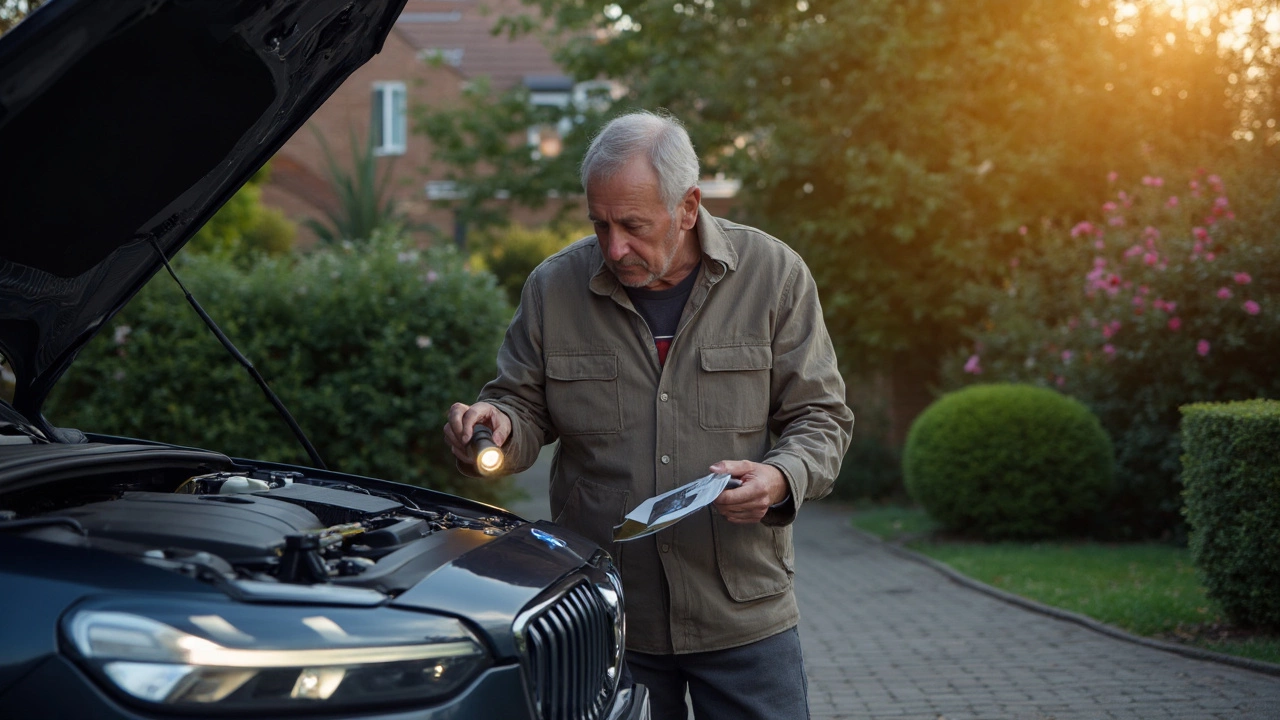So, you're about to take on the task of changing your car's fuel pump. Kudos! It's a job that can save you some cash if you're willing to get your hands dirty. But before you jump in, there's one big question you need to ask: should you disconnect the battery?
Yes, you probably should. Disconnecting the battery is a key step in safety. Think about it: you're dealing with fuel and electricity—an explosive combo if not handled right. By disconnecting the battery, you're drastically cutting down the risk of sparks. Sparks in the presence of fuel fumes? Not a good mix.
But it's not just about avoiding explosions. Ever heard of electrical component damage? Without disconnecting your battery, there's a chance you could fry something important. And believe me, replacing a bunch of electronics isn't cheap or fun.
- The Importance of Battery Disconnection
- Safety Tips for DIY Fuel Pump Replacement
- Common Mistakes to Avoid
- Practical Steps for a Smooth Swap
The Importance of Battery Disconnection
When changing a fuel pump, one often-overlooked step is disconnecting the battery. It might seem like a small thing, but it plays a massive role in ensuring safety and avoiding costly mistakes.
Preventing Electrical Sparks
Here's the deal: fiddling around with your car’s fuel system creates a higher risk of electrical sparks. Mixing these with fuel fumes is a recipe for disaster. Disconnecting the battery virtually eliminates this risk, keeping you and your car safe.
Protecting Electrical Components
Your car's electrical system is intricate. Accidentally creating a short circuit while working on any electronic component can fry circuits or damage the car's computer. Disconnecting the battery acts like a safeguard, keeping your vehicle's electronics out of harm's way.
Avoiding Mishaps with Modern Cars
Modern vehicles are often tricky. With an array of sensors and electronics, leaving the battery connected while working can lead to unintended problems. A disconnected battery ensures that these systems remain untouched.
- Always start by removing the negative terminal first.
- After the job, reconnect the positive terminal before the negative.
Following these simple steps not only ensures a successful repair but saves you from dealing with blown fuses or fault codes later on.
Safety Tips for DIY Fuel Pump Replacement
Tackling the change of a fuel pump on your own is both bold and smart. But stepping into your garage to handle this task involves watching out for some key safety steps. Curious what they are? Let's dive in!
1. Ventilate the Area Well
Before you unscrew anything, make sure your workspace is well-ventilated. Gas vapors can accumulate quickly, and you definitely don't want to be breathing those in. An open garage door or a fan can help keep the air fresh.
2. Disconnect the Battery
We've covered this, but it can't be stressed enough. Unplugging the battery is crucial to avoid sparks that could ignite fuel vapors when you're fiddling around with components.
3. Invest in a Fuel Line Disconnect Tool
This isn't just a handy gadget; it's a lifesaver for preventing leaks. It'll help you safely and easily detach the fuel lines from the pump, minimizing spills and reducing mess.
4. Keep Fire Extinguisher Nearby
It might sound dramatic, but having a fire extinguisher within reach is smart. In case of an unexpected flare-up, you'll be glad to have it.
5. Wear Protective Gear
Always use safety goggles and gloves. These don't just make you look like a pro, they'll protect your eyes from splashes and your hands from cuts or burns.
6. Avoid Static Electricity
Static can cause sparks—yep, just like the battery. Avoid wearing woolly clothes and try grounded surfaces to help keep static at bay.
Optional: Take Notes
If it’s your first time, jot down or even take pictures of each step. This way, if you hit a snag or can't remember what piece goes where, you've got a built-in guide to fall back on.
Following these tips will ramp up your safety game and make the whole DIY experience more enjoyable. Who doesn't want a less stressful, spark-free project?

Common Mistakes to Avoid
When you're replacing a fuel pump, especially if it's one of your first times doing car maintenance, there are some pitfalls you might not even know to watch out for.
Skipping the Battery Disconnect
This one's a no-brainer. Not disconnecting the battery before fiddling with the pump is like playing with fire. A spark from a connected battery can turn a simple job into a dangerous situation. Plus, leaving the battery connected can mess with the car's electrical components.
Ignoring the Fuel Line Pressure
Some folks forget all about relieving the fuel line pressure. It's crucial. If you don't release that pressure, you're setting yourself up for a surprise spray of fuel the moment you loosen anything. A little spill is okay—getting doused is not.
"It's not just about changing a part; it's about understanding how it fits into the system," says auto expert and best-selling author, Michael Cardone. "Missing a step can lead to bigger issues down the road."
Failing to Check Fuel Pump Compatibility
Another misstep? Grabbing just any fuel pump without checking if it's the right one for your specific make and model. You wouldn't want to spend hours on a repair only to find that the new pump doesn't fit. Use your car's manual or consult with a parts store to avoid this hassle.
Rushing the Test Drive
After installing your new pump, resist the urge to immediately take the car for a drive around the block. First, double-check your work. Are all the hoses secure? No leaks? Doing a quick re-check can save you tons of time—and prevent damage.
- Always disconnect the battery.
- Relieve fuel line pressure before starting.
- Verify fuel pump compatibility with your car.
- Double-check installations before test driving.
Avoiding these mistakes requires a little extra time and attention, but it's well worth it for the safety and functionality of your vehicle.
Practical Steps for a Smooth Swap
Ready to tackle the fuel pump replacement? It's all about getting organized and following some straightforward steps. Here's your game plan:
Gather Your Tools and Parts
Make sure you've got everything you need before you start. Essentials include wrenches, screwdrivers, a jack, and replacement parts. Planning to disconnect the battery? You'll need a wrench for that too. Missing tools can disrupt your flow, so double-check!
Prep the Vehicle
First things first, ensure your car's in a safe spot. Flat, level ground is your best bet. Deploy the parking brake and disconnect the battery to steer clear of any unintended electricity issues.
Drain the Fuel Tank
This step is key for a smooth and less messy swap. Use a fuel pump relay to depressurize the system, then siphon out any remaining fuel safely. Trust us, you'll thank yourself for not having a fuel flood later on.
Remove the Old Fuel Pump
Now, get under the car and remove the fuel tank. This is where you've got to be patient—take time disconnecting lines and wires to avoid any damage. Once those are clear, out with the old pump!
Install the New Fuel Pump
Time to reverse those removal steps! Carefully position the new pump in place, reattach all lines and wires, and make sure everything's back as it was. Don’t rush—tight connections ensure no leaks or future problems.
Test Your Work
Reconnect the battery and fire up the car to see if everything's running smoothly. Check for leaks or strange noises. A quick test drive can go a long way in confirming you’ve done the job right.
Follow these steps, and you should have your car back on the road without a hitch. Sure, it takes a bit of effort, but with care, you'll have a job well done!

